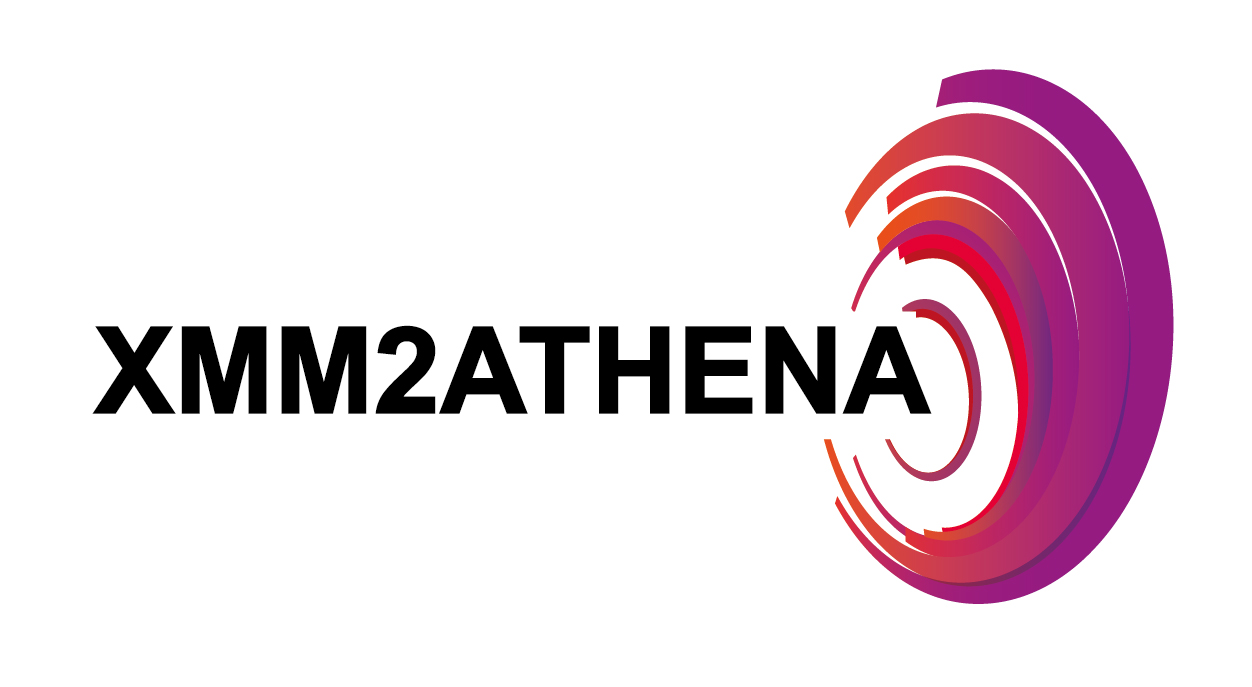Work Package 2:
This work package aims at providing multi-wavelength statistical identifications and spectral energy distributions of XMM-Newton X-ray sources. During the first year of the project we have identified the main catalogues of interest so as to cover different wavelengths and depths. For a subset of these catalogues, we have computed preliminary statistical associations using the ARCHES tool. This tool calculates the probability of detections in different catalogues being associated to the same source based on their positions, positional errors and local densities. For all the possible matches we have investigated the corresponding colours and spectral energy distributions and we have compared them to those of different classes of well studied objects as well as to false associations. For the subset of catalogues we have worked on, we have found that a combination of X-ray and infrared colours helps in most of the cases to discern galactic and extragalactic sources from false associations. We have built a prototype tool to calculate the photometric likelihood of being a true match based on a kernel density correlation. This method combined with well defined learning samples allows us to give a first estimation the the true/false associations in a photometric probabilistic way. As next steps we would like to combine the photometric likelihoods with the positional probabilities following F.-X. Pineau et al 2017 and validate the obtained results. Once validated for the subset of catalogues we have worked on we would like to expand the study to other catalogues.
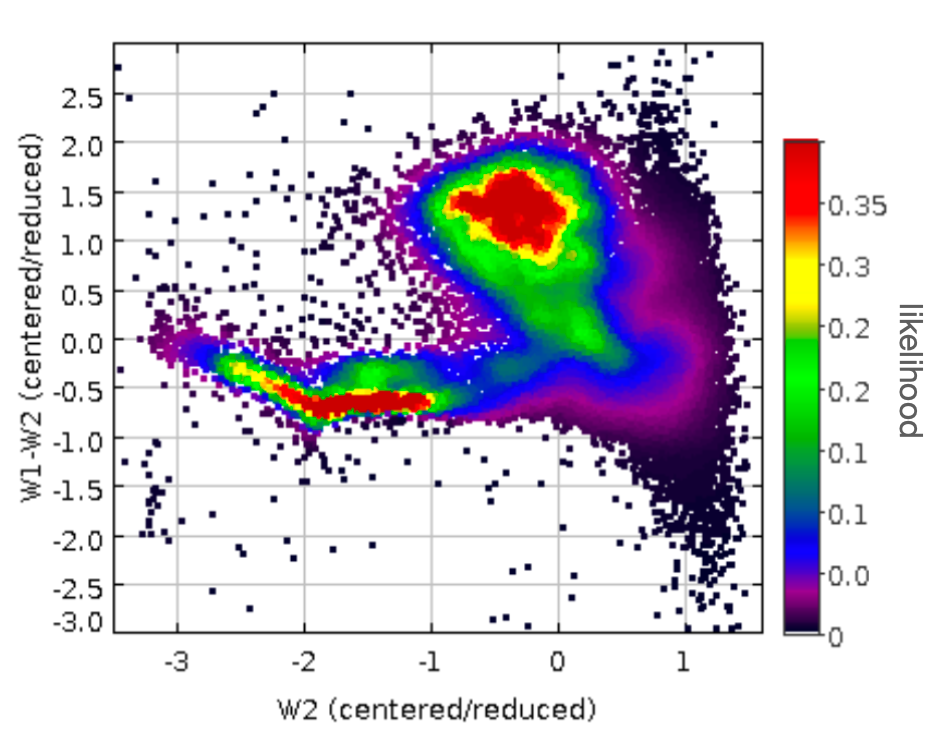
Work Package 3:
Work has concentrated on developing a first version of the Sensitivity Estimator which can return both fluxes and flux upper limits from a region of the XMM-Newton EPIC data, with both the position and the size of the region chosen by the user. The user can also specify the energy band, reliability of the estimate required and provides (annotated) overlays of the region of interest in a variety of wavelengths. This has been done by building on an earlier tool, the Flux Limits from Images from XMM-Newton (FLIX), adapting it to run on new servers and integrating the whole of the latest version of the XMM-Newton catalogue, 4XMM-DR11 (Webb et al. 2020) to run with the Sensitivity Estimator. We have prioritised simplifying, modernising and harmonising the interface to resemble other XMM-Newton interfaces and providing user-friendly documentation. The tool can now be accessed at: http://flix.irap.omp.eu/
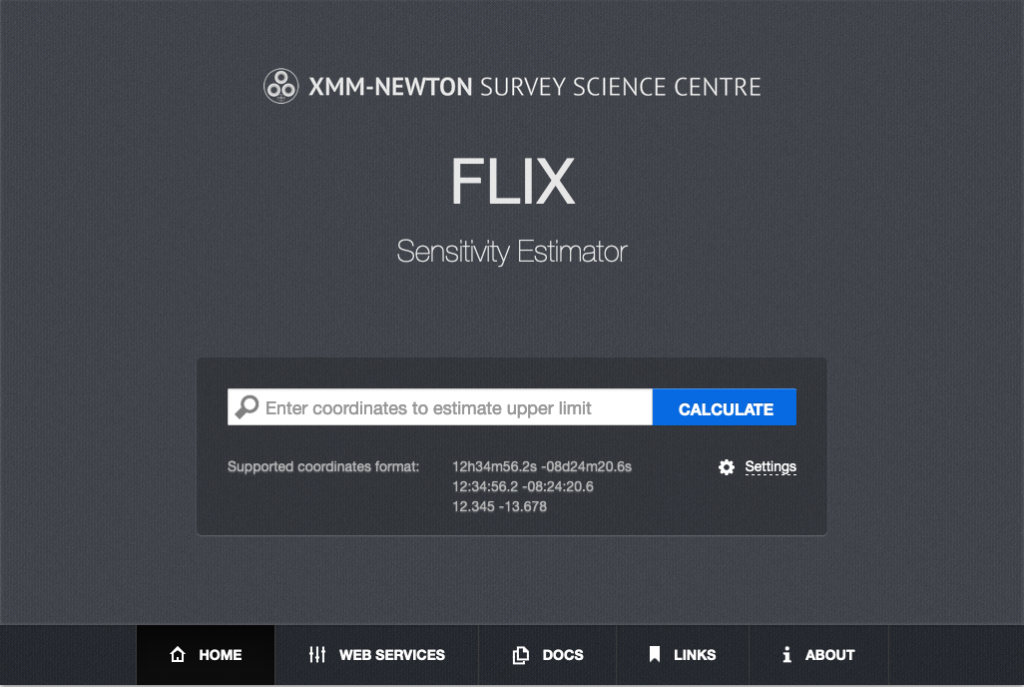
Work Package 4:
“The enhanced stacked catalogue”, aims at optimum sensitivity towards faint sources in overlapping observation. A new source-detection scheme is being implemented to achieve it. The first year was mostly dedicated to re-structuring the respective XMM-Newton software. Its sub-routines were documented and visualised in many more details than available so far, providing the basis for the following code changes. Several routines needed substantial modification to accommodate the new scheme, in which the source flux is assumed to be constant during all observations. This assumption requires knowledge of the conversion factors from the measured counts, which depend on the instrumental set-up, to astrophysical fluxes. A grid of conversion factors is being pre-calculated, and an interface to the source-detection software will be provided, to assess and use them efficiently during the fitting process. All these code upgrades are on-going.
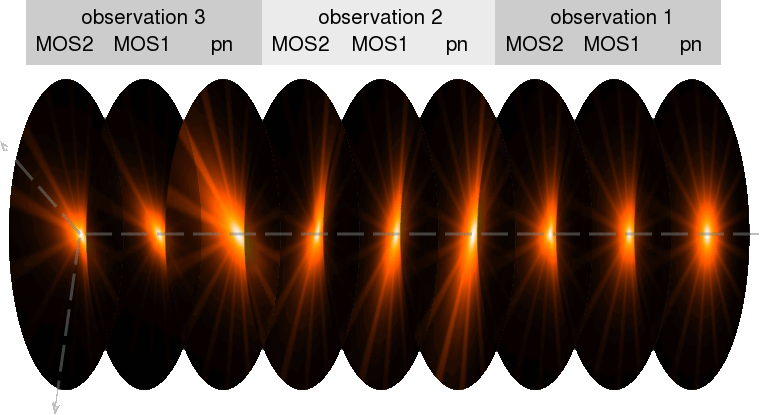
Additional improvements are envisaged to increase the quality of detection results and of the source parameters: enhanced astrometry, a sensitivity assessment of the input exposures, and a tiling strategy to parallelise the processing of widely extended stacks. Respective approaches have been investigated and are coordinated with the code updates. The WP4 tasks are also closely related to other Work Packages. For example, the fluxes derived during source detection are used to assess long-term variability by WP5, and the catalogue data become an input to the sensitivity estimator of WP3. Virtual meetings and frequent e-mail exchange among the beneficiaries ensure the efficient coordination of the contributions within WP4 and across the Work Packages, to ensure a smooth work progress.
Work Package 5:
During the first year of the project we have concentrated on developing the software to determine long term and very faint, short term variability in XMM-Newton pointed EPIC data. To develop the long term variability we have taken five X-ray catalogues in addition to the XMM-Newton pointed data to extend the time duration and to increase the number of points in the lightcurve. These include The Chandra Source Catalogue (CSC 2.0, Evans et al.2020b), The Swift X-ray Points Source catalogue (2SXPS, Evans et al. 2020, The Rosat All Sky survey (2RXS, Boller et al. 2016), the ROSAT pointed pointed survey, The XMM-Newton slew survey (Saxton et al. 2008) and the early release Erosita data (eFEDS, Brunner et al. 2021), which we further augmented with XMM-Newton upper limits using RapidXMM (Ruiz et al. 2022). To do this we developed an algorithm based on the matching method described in Salvato et al. (2018). We have identified the best X-ray band(s) to be compared and the spectral model to be used to determine the fluxes, in order to create reliable comparisons, as well as the ideal criteria for determining variability. From a pilot study on two months of data, we determined the number and type of alerts expected. We also extended this search to probe spectral variability and variability in the optical/UV data from the OM telescope on board XMM-Newton.
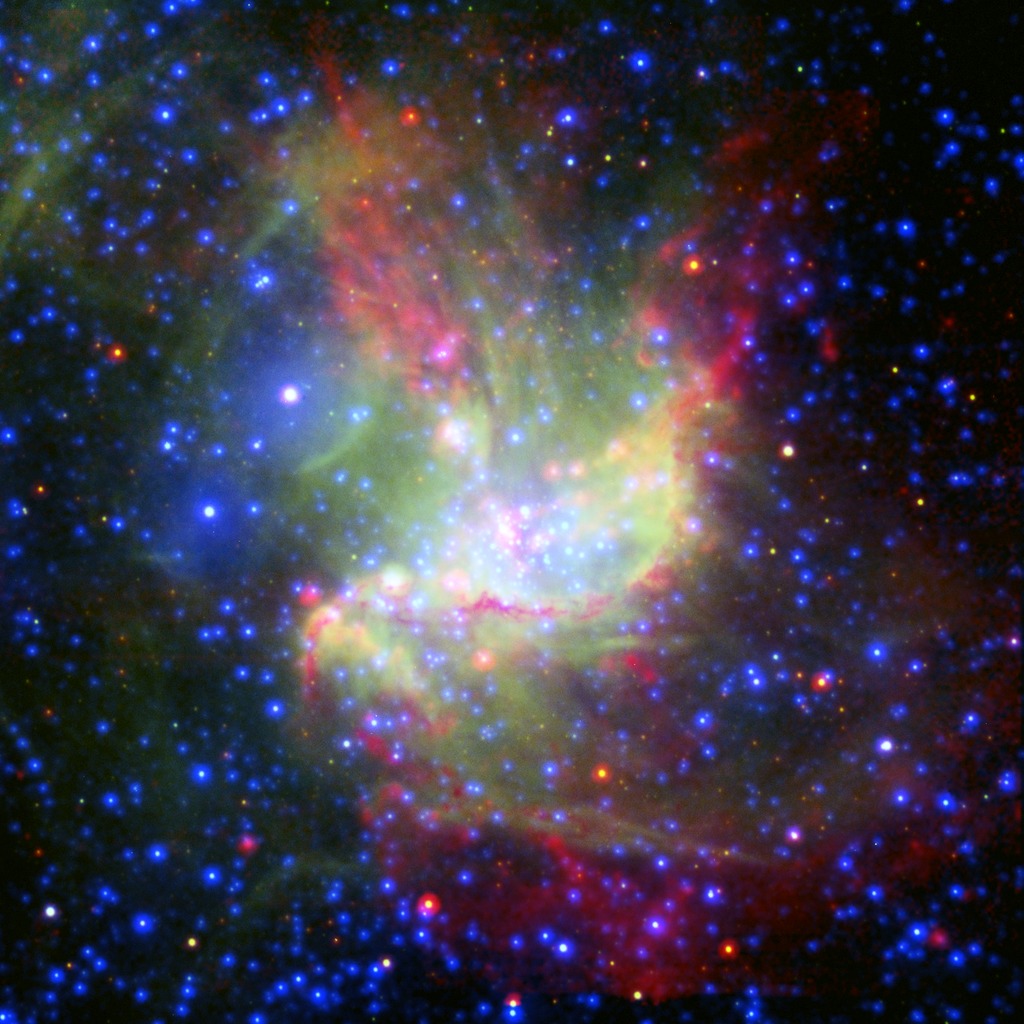
To search for faint, short term variability, we have built on preliminary work developed and published in Pastor-Marazuela et al. (2020) on the EPIC-pn XMM-Newton outburst detector (EXOD) algorithm. The algorithm can now be applied to the MOS detectors and all modes of the EPIC detectors. Improvements have been made to the algorithm determining the position of the variable source and work has been done to exclude regions on the detectors affected by very bright sources, that can lead to false detections. We have carried out preliminary tests on the improved algorithm, comparing it to the previous work done. We have also shown that the code is able to pick out very significant variability from brighter sources. Whilst these sources are detected by the XMM-Newton pipeline, the variability has not been identified using the current algorithms in the pipeline. This is an added bonus result to the work. The code has been parallelised to allow it to run faster on the large volume of data available and we have started to carry out analysis on all of the XMM-Newton observations.
Work Package 6:
This work package aims at providing spectral charaterisations for several subsamples of serendipitous XMM-Newton sources, taking advantage of their X-ray spectra, automatically extracted during the pipeline processing of all XMM-Newton products.
For the spectral characterisation we have used a sophisticated Bayesian fitting method (BXA) with a thorough exploration of the parameter space. As a reference model, we are using a powerlaw, absorbed by cold gas. Additional models, such as an absorbed blackbody and a thermal bremstrahlung, are also under consideration.
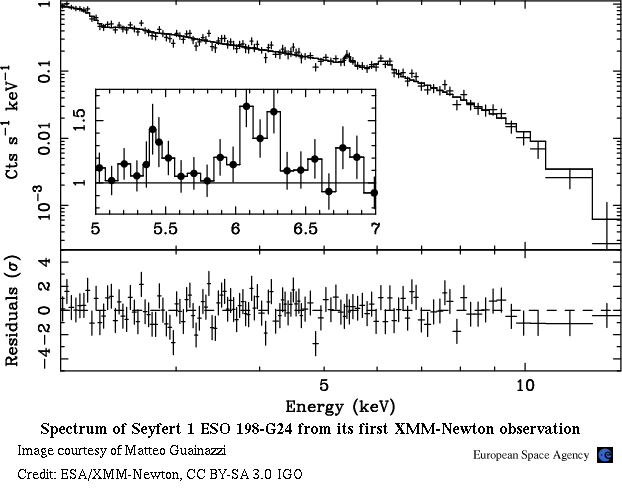
The work is structured in several incremental steps, each building on the previous step, on the accumulated expertise of the participants and on the additional insight gained in the previous step. The end of each step is marked by a deliverable.
The first deliverable (D6.1, released at the end of 2021) was a catalogue of spectral fits to the spectra of individual detections of X-ray sources in 4XMM DR11, after applying some quality filters, designed to ensure that the results are reliable and meaningful. We have obtained fits for 97% of the detections with extracted spectra, of which 75% (more than 230000 sources) are considered of acceptable quality. For each fit we provide some quality flags, the best fit parameter values for an absorbed powerlaw model, along with estimates of the 90% confidence interval.
Many of those detections correspond to repeated observations of the same physical source. We have taken advantage of the corresponding increase in the signal by providing, in a second deliverable (D6.2, released at the end of April 2022), fits to the merged spectra of all observations of the same physical source (more than 30000 sources after filtering). In this case we also provide fits to an absorbed blackbody model, in addition to an absorbed powerlaw model as for D6.1, for which 38.6% and 25.2% of the fits are considered of acceptable quality (respectively). Again, for each fit and each of the two models we provide some quality flags, the best fit parameter values for an absorbed powerlaw model, along with estimates of the 90% confidence interval.
The full 4XMM DR11 catalogue contains nearly 900000 sources, only a fraction of which (~320000) have their spectra extracted and were therefore considered for full spectral fits (in D6.1 above). Our third deliverable (D6.3, released on December 2022) aims at providing basic spectral information for all sources in the catalogue, by using the countrates from it as a heavily binned spectrum of low resolution. Fits to an absorbed powerlaw are found to be acceptable for almost 90% of them. We provide the same information for this fits as in the previous two deliverables.
Our fourth and final deliverable (D6.4, due at the end of March 2023) will take into account the nature of each source (from preliminary identification and photometric work from Work Package 8) and fit different spectral models to different types of sources, depending on their physical characteristics. Our provisional list of models is a redshifted powerlaw, with redshifted absorption and local absorption fixed at the Galactic value for Active Galactic Nuclei (AGN), a combination of two absorbed models corresponding to collisionally-ionized diffuse gas for “normal” stars, a combination of an absorbed powerlaw and an absorbed blackbody for X-ray binaries (XRB) and an absorbed bremsstrahlung spectrum for cataclysmic variables. The preliminary number of sources for which detailed classification and spectra are available is ~110000 AGN with photometric redshifts, ~11000 “normal” stars, 8700 XRB and about 2500 CV. Extensive tests are under way as of February 2023 and we are aiming to provide fits for full sets of some classes by end of March, with final fits for all classes shortly afterwards.
In addition to detailed reports for each deliverable, we plan to write a scientific paper to present the catalogues and discuss some of their scientific content during 2023.
Work Package 7
WP7 is about classifying the ultraviolet and optical sources that are detected by the XMM-Newton Optical Monitor (XMM-OM) which observes in parallel with the X-ray cameras. We’re interested in what the sources are, and whether/how they vary. We plan to provide an automated classification for the majority of XMM-OM sources.
The focus of the work carried out in the first year was to establish the training set: a group of sources for which the type and properties are well understood. The primary division of source types is between stars, galaxies and QSOs. For the stars, the key pieces of information are the spectral type and the luminosity. For the galaxies and QSOs, the key piece of information is the redshift, which for the training set will be spectroscopically-derived.
For the stellar content of the training set, the main activity has been a complete cross correlation of the dataset with Gaia to identify stars by proper motion and parallax. Gaia is a European Space Agency astrometric survey satellite charting the positions and motions of stars in our galaxy; Gaia Data Release 2 has been used for the cross correlation. For each XMM-Newton OBSID, the positions of Gaia sources have been transformed to the epoch of the XMM-Newton observation, taking into account the proper motions of the stars as measured by Gaia. The matching to SUSS sources is carried out using the Starlink Topcat/Stilts software packages. Parallax and proper motion are used to identify Galactic stars, and parallax is used to determine distances and hence luminosities. For the extragalactic part of the training set (quasars and galaxies), the XMM-SUSS was cross-correlated with the Sloan Digital Sky Survey. Extragalactic sources with spectroscopic redshifts were incorporated into the training set.
In parallel with the creation of the training set, an augmented XMM-SUSS catalogue was created by adding to the SUSS catalogue optical and infrared photometry from the large sky surveys of PanSTARRS, Skymapper, UKIDSS, Vista and WISE.
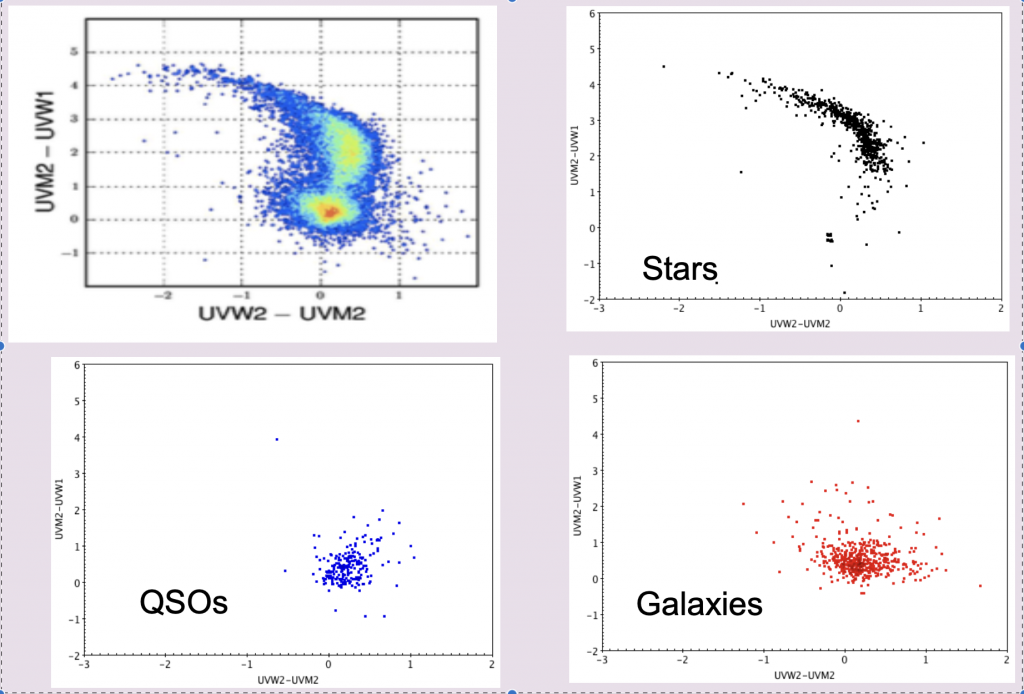
Work Package 8:
The main objectives in WP8 are: (1) the development of an Artificial Intelligent algorithm for the classification of 4XMM sources in various classes and (2) the estimation of the photometric information for the extragalactic population in the 4XMM catalogue.
The IRAP group worked on the classification of X-ray sources. A machine learning tool has been developed which can classify sources among the AGN, X-ray binaries, cataclysmic variables and stars. The tool uses the spectral information, variability as well as the photometric information.
The design of the algorithm and the testing results have been presented in a scientific paper under the title “Probabilistic classification of X-ray sources applied to Swift-XRT and XMM-Newton catalogues” (Tranin et al 2022, A&A, 657, 138)
We have set up a preliminary data pipeline for the calculation of photometric redshift based on MLZ-TPZ (Carrasco Kind & Brunner, 2013). MLZ-TPZ is a machine learning algorithm based on a supervised technique with prediction trees and random forest. We have used a preliminary data sample provided from WP2, the cross-matching products for 4XMM-DR10. This dataset includes the crossing of an earlier version of the 4XMM with SDSS-DR12, PanSTARRS-DR1, 2MASS and AllWISE, plus several other multiwavelength catalogues. Although the final outcome of this task would be based on the final catalogue produced by WP2, its structure would be very similar to these preliminary catalogues. The additional multi-wavelength catalogues which we plan to use include the DESI and LEGACY deep optical catalogues as well as the UKIDSS and VHS near-IR catalogues

Work Package 9:
Work Package 9 plays a key role in the XMM2ATHENA project in demonstrating, through exemplar specific science projects, the value of the science products and tools developed elsewhere in XMM2ATHENA. In order to do this, it is necessary, of course, for mature versions of these products and tools to be available, and hence the main activities in this work package (and the associated deliverables) are scheduled for the later stages of the project.
Steady progress has been made in WP9 in the last year. A detailed understanding has been developed of the four exemplar science projects in the XMM2ATHENA proposal, coupled with a clear understanding of the prerequisites in terms of data products and analyses. Most of the projects require data from deliverables scheduled to be completed at least 18 months after the project start date. However, some positive steps are being made. Principal among them is the publication of Hugo Tranin’s paper (Tranin et al.,2022, A&A, in press]. This would form the basis of the ‘New Transients & Flaring Sources’ project. Athens declared a strong interest in leading the ‘AGN X-ray Luminosity Function’ project given their expertise in the field. Progress on the ‘X-ray Spectral Properties of AGN’ and ‘Compact White Dwarf Binaries projects has been limited. Discussions have highlighted other projects being investigated which could act as a replacement.
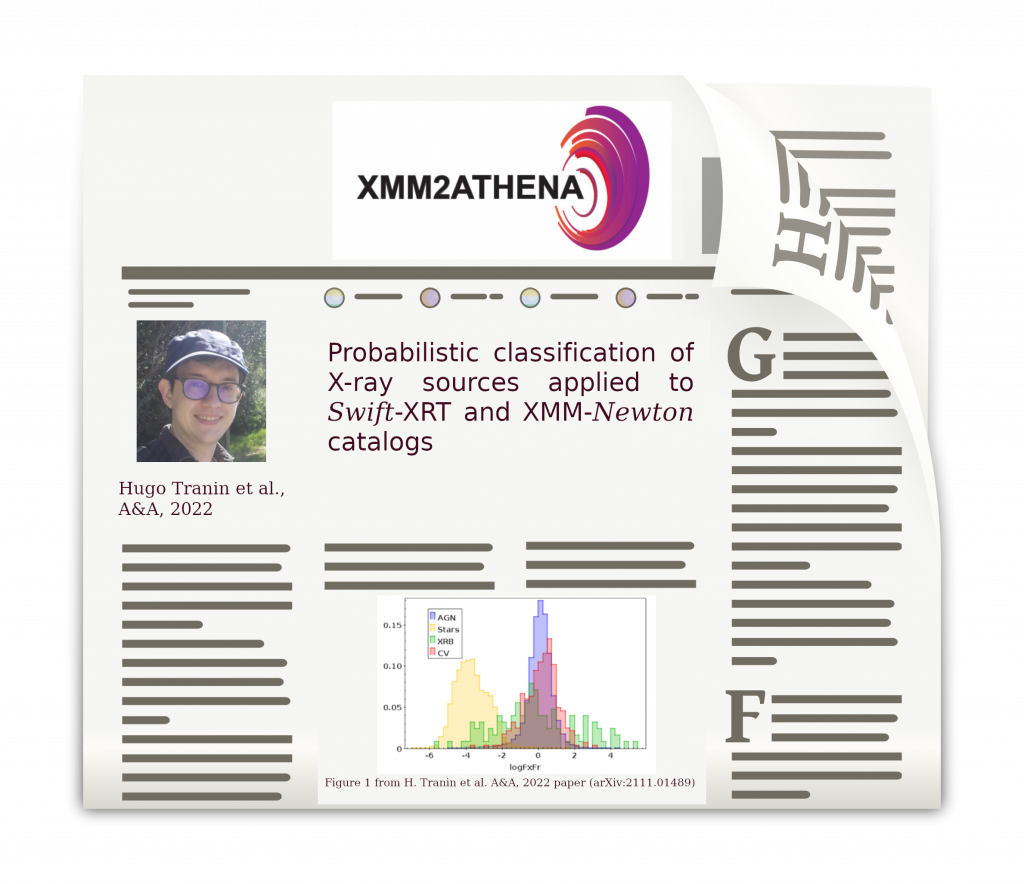
Ways that preliminary, cut-down versions of the science projects could be pursued in the “waiting period” have been investigated and we have also explored other related science to identify any which would showcase XMM2ATHENA in the interim. We are in the process of constructing an extragalactic sample from the 4XMM catalogue that can be used as the basis for work on the source counts and, eventually, the X-ray luminosity function.
The kick-off meeting for this WP proved to be a valuable forum for discussion of the work of other WPs that will eventually feed into WP9 activities. Periodic meetings will be held to ascertain the progress made by various institutions towards completing the exemplar projects. One possible format under discussion is to allow groups leading each project to present progress and problems faced. This would enhance communication within XMM2ATHENA and allow for collaboration on solutions to challenges. As we move towards the planned XMM2ATHENA milestones, we intend to hold WP9 meetings more frequently.
